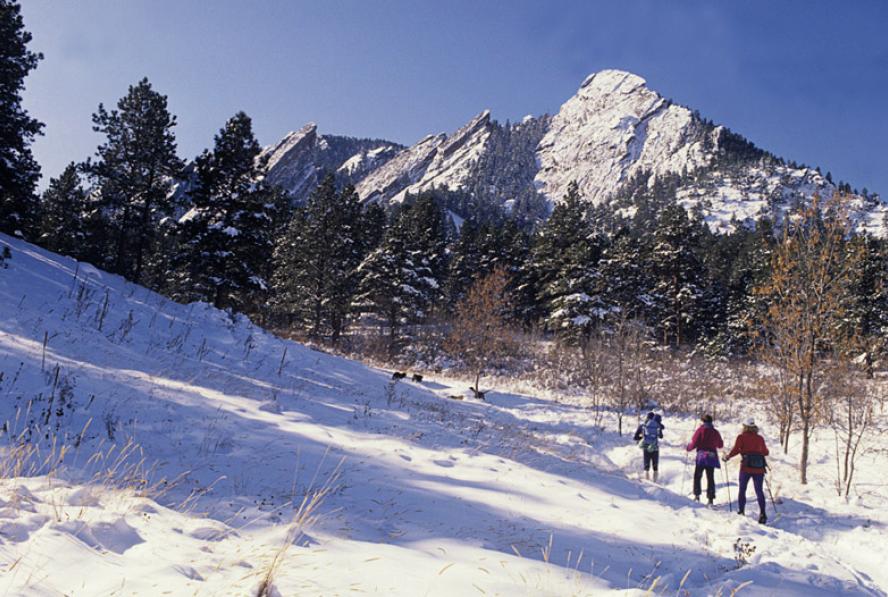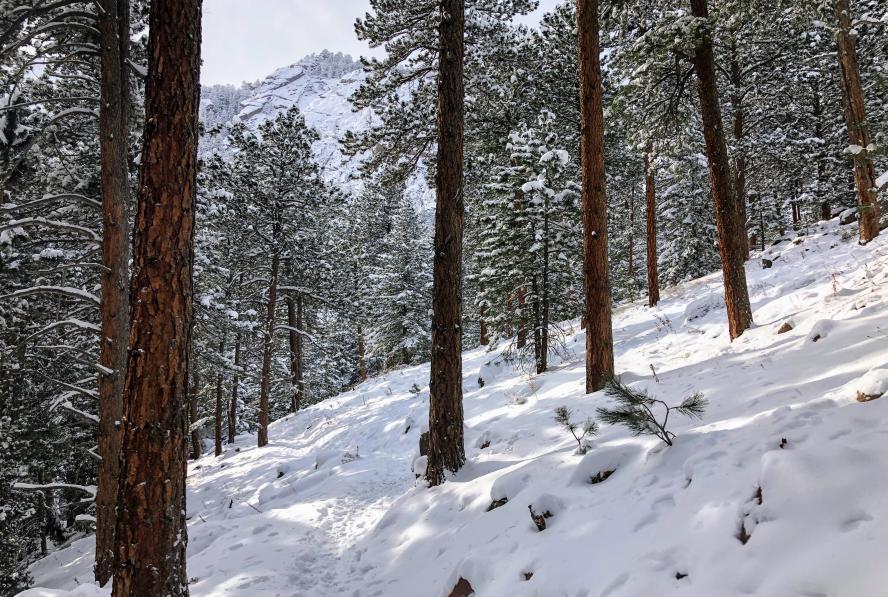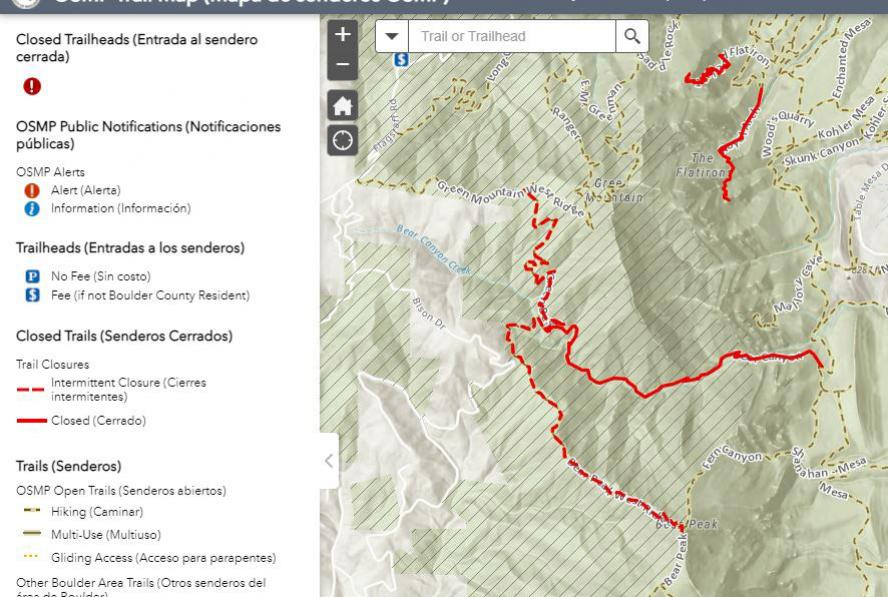Some Facts About Boulder's Open Space and Mountain Parks
What: More than 46,640 acres of land has been preserved and protected. Wildlife habitat, unique geologic features, greenways and 155 miles of trails are all part of Open Space and Mountain Parks. Learn more about land acquisitions.
When: Open Space preservation began in 1898! See more below.
Where: Boulder's Open Space and Mountain Parks form a buffer around the city, helping to establish its own, separate identity from neighboring communities. Agricultural lands along the Boulder/Denver Turnpike and the Diagonal Highway provide a scenic entry into Boulder. Mountain backdrop and riparian greenways are also part of OSMP. The system forms the framework within which development occurs in the Boulder Valley.
How: Through sales tax revenues, bond issues, private donations and development dedications. Acquisitions are approved by the Open Space Board of Trustees and City Council with opportunity for public input.
Why: The city charter states that open space land shall be acquired, maintained, preserved, retained, and used only for eight specific purposes.
Who: You! The people of Boulder, by their support of Open Space and Mountain Parks for over a century.


